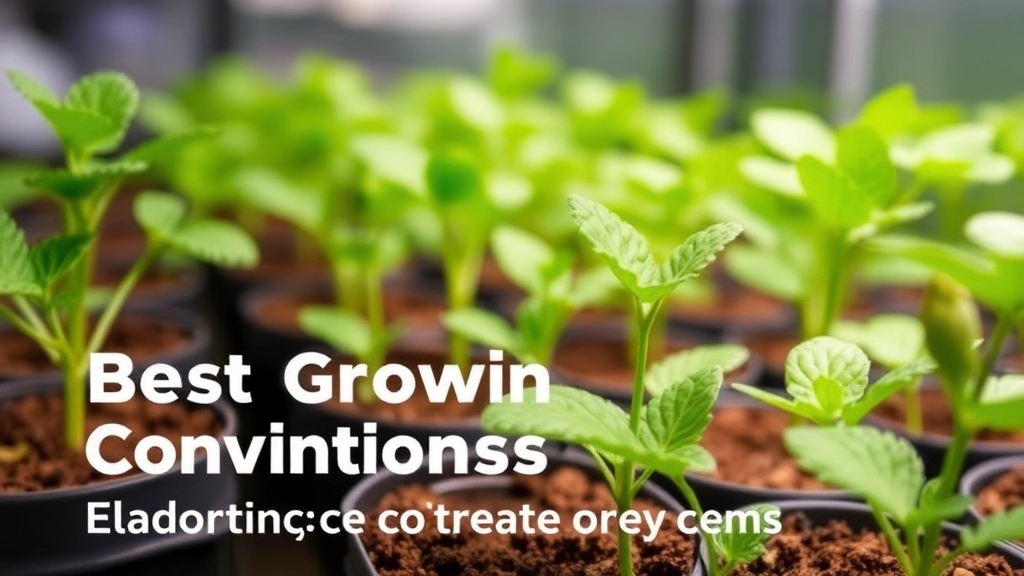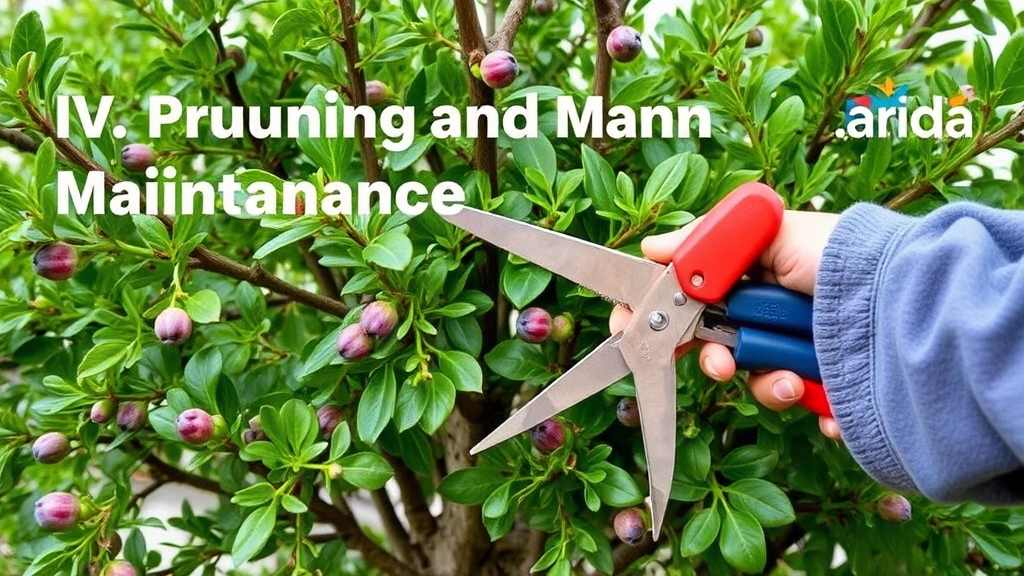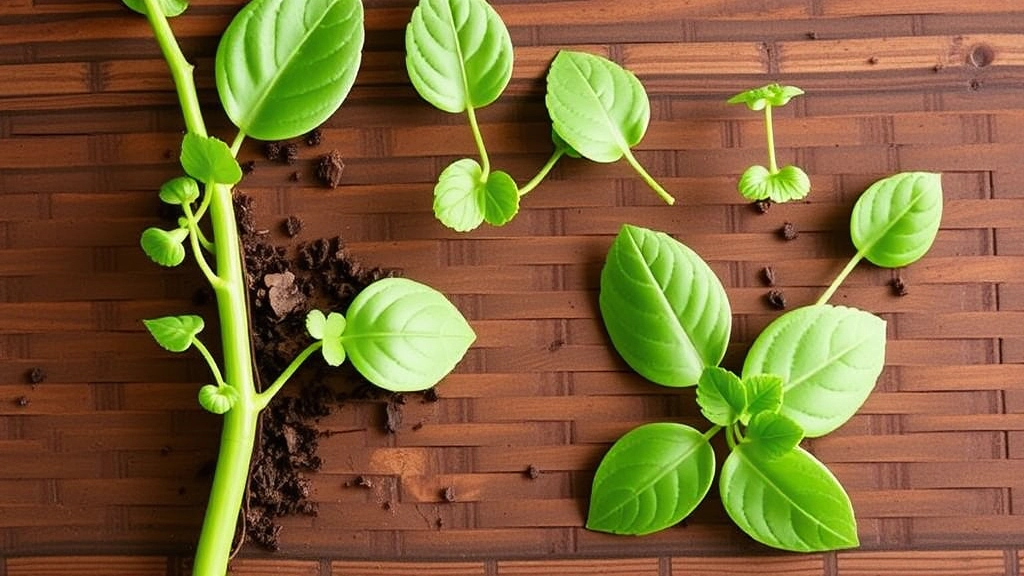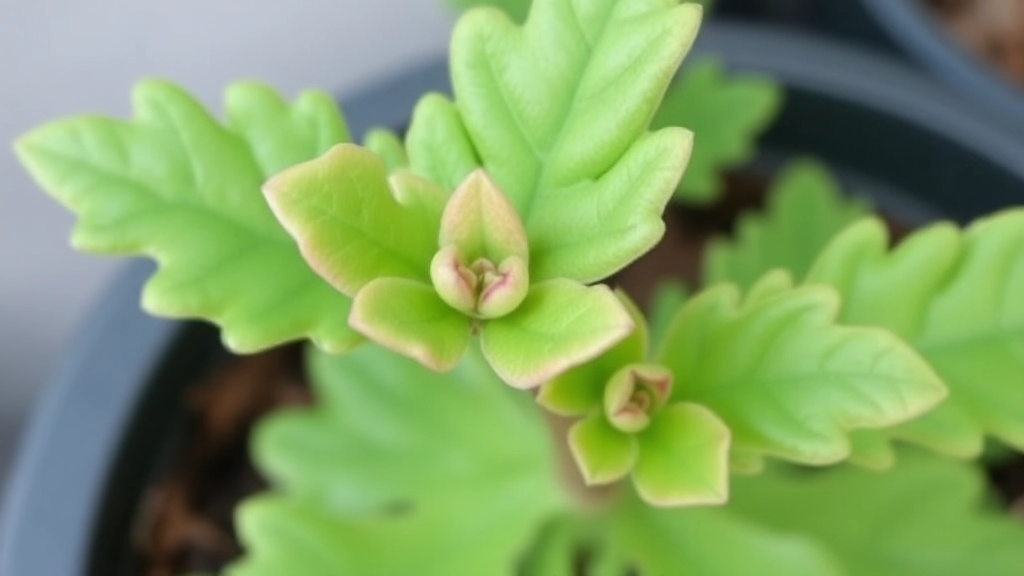Mastering the Care of Kalanchoe Beharensis Oak Leaf
Looking to master the care of your Kalanchoe Beharensis Oak Leaf? This unique succulent, known for its striking oak leaf-shaped foliage, is a favourite among plant enthusiasts. In this guide, I’ll share essential tips on how to grow, maintain, and troubleshoot common issues with your Kalanchoe Beharensis Oak Leaf.
Ideal Growing Conditions
First, let’s delve into its ideal growing conditions. This plant thrives in bright, indirect sunlight and prefers well-draining soil. Regular watering is crucial, but be cautious of overwatering, as it can lead to root rot. Additionally, feeding your plant with a balanced fertiliser during the growing season will keep it healthy and vibrant.
When considering the Kalanchoe Beharensis, often affectionately known as the Oak Leaf plant, many enthusiasts wonder what makes this succulent so special.
This unique plant is renowned for its striking, fleshy leaves that resemble the shape of oak leaves, giving it a distinctive appearance.
Key Features:
– **Leaf Structure:** The leaves are thick, elongated, and can grow up to 15 cm long, showcasing a beautiful, silvery-green hue.
– **Growth Habit:** It typically grows upright, reaching heights of about 1 meter, making it a stunning focal point in any space.
– **Flowers:** While it may not bloom frequently, when it does, it produces clusters of small, tubular flowers that can be yellow or orange.
– **Texture:** The leaves have a slightly waxy texture, which helps retain moisture, making it a drought-tolerant option.
The Kalanchoe Beharensis is not just a pretty face; it’s also resilient and easy to care for, making it a popular choice among both novice and experienced gardeners. For more detailed care tips, you might find the [Care Tips for Kalanchoe Beharensis cv. Fang Succulent](https://planthq.org/care-tips-for-kalanchoe-beharensis-cv-fang-succulent/) useful. Additionally, if you’re interested in expanding your collection, check out the [Kalanchoe Beharensis Maltese Cross Care](https://planthq.org/kalanchoe-beharensis-maltese-cross-care-growth-uses/) for more insights on another fascinating variety.
Best Growing Conditions: Light and Temperature Requirements

When it comes to keeping your Kalanchoe Beharensis Oak Leaf thriving, light and temperature are key players in the game.
You might be wondering, “How much light does my plant really need?”
Well, Kalanchoe Beharensis loves bright, indirect sunlight.
Here’s the lowdown:
- Ideal Light: Aim for at least 6 hours of bright, indirect sunlight daily.
- Direct Sunlight: Too much direct sun can scorch those lovely leaves, so be cautious!
- Low Light: If your space is a bit dim, it’s not the end of the world. Your plant will survive, but it might not grow as vigorously.
Now, let’s talk temperature.
Kalanchoe Beharensis prefers a warm environment, typically between 18°C to 24°C (65°F to 75°F).
Here are some temperature tips:
- Avoid Cold Drafts: Keep your plant away from chilly windows or doors.
- Winter Care: If temperatures drop below 10°C (50°F), it’s best to bring your plant indoors.
- Humidity Levels: This plant isn’t picky about humidity, but it thrives in average home conditions.
Watering and Feeding: How to Keep Your Kalanchoe Beharensis Oak Leaf Healthy
One of the most common concerns for plant enthusiasts is understanding how to properly water and feed their Kalanchoe Beharensis Oak Leaf.
Watering Guidelines
Getting the watering right is crucial for the health of your plant. Here are some key points to consider:
- Frequency: Water your Kalanchoe Beharensis when the top inch of soil feels dry. This typically translates to every 2-3 weeks, depending on your climate.
- Method: Water thoroughly until it drains from the bottom of the pot. Ensure that excess water does not sit in the saucer, as this can lead to root rot.
- Seasonal Adjustments: During the growing season (spring and summer), you may need to water more often. In the dormant months (autumn and winter), reduce watering to prevent over-saturation.
Feeding Your Plant
In addition to proper watering, feeding your Kalanchoe Beharensis will ensure it thrives. Here’s how to do it effectively:
- Fertiliser Type: Use a balanced, water-soluble fertiliser diluted to half strength.
- Frequency: Feed your plant every 4-6 weeks during the growing season.
- Avoid Overfeeding: Too much fertiliser can harm your plant. Stick to the recommended amounts to prevent nutrient burn.
Maintaining the right balance of water and nutrients is essential for your Kalanchoe Beharensis Oak Leaf to flourish. For more expert tips, check out our Kalanchoe Beharensis care guide.
If you’re interested in growing other varieties, you might find our guide on Kalanchoe Tomentosa care tips helpful.
IV. Pruning and Maintenance Tips for Optimal Growth

After ensuring your Kalanchoe Beharensis Oak Leaf has the right growing conditions, it’s time to focus on pruning and maintenance to keep your plant thriving.
Why Pruning Matters
Pruning is essential for maintaining the health and shape of your Kalanchoe Beharensis. It encourages new growth, removes dead or unhealthy leaves, and can help prevent pests.
When to Prune
- Timing: The best time to prune is during the spring or early summer when the plant is actively growing.
- Signs to Prune: Look for yellowing leaves, leggy growth, or any signs of disease.
Pruning Steps
- Gather Tools: Use clean, sharp scissors or pruning shears.
- Identify Areas to Cut: Focus on dead leaves and stems.
- Make Clean Cuts: Cut just above a leaf node to encourage new growth.
- Dispose of Debris: Remove any cuttings to prevent pests and diseases.
Maintenance Tips
- Dusting Leaves: Regularly wipe the leaves with a damp cloth to keep them dust-free, promoting better photosynthesis.
- Check for Pests: Inspect your plant every few weeks for common pests like mealybugs or aphids.
- Rotate Your Plant: Give it a gentle turn every so often to ensure even light distribution.
Additional Care
- Fertilisation: Consider fertilising every few months during the growing season to provide essential nutrients.
- Repotting: If your plant outgrows its pot, repotting every couple of years can rejuvenate growth.
When cultivating Kalanchoe Beharensis Oak Leaf, you may encounter several common issues that can hinder its growth and overall health. Understanding these challenges will empower you to take corrective action swiftly.
### 1. Leaf Dropping
One of the most frequent concerns is leaf dropping. This can be caused by:
– **Overwatering**: Ensure the soil is well-draining and allow it to dry out between waterings.
– **Underwatering**: Conversely, if the plant is too dry, it may also shed leaves. Regularly check the moisture level.
### 2. Yellowing Leaves
Yellowing leaves can indicate several problems:
– **Nutrient Deficiency**: A balanced fertiliser can help.
– **Poor Drainage**: Ensure your pot has drainage holes and the soil is not compacted.
### 3. Pests
Kalanchoe Beharensis can attract pests like aphids and mealybugs. To tackle this:
– **Inspect Regularly**: Check the undersides of leaves for pests.
– **Use Neem Oil**: A natural remedy that can help eliminate infestations.
### 4. Stunted Growth
If your plant isn’t growing as expected, consider:
– **Light Conditions**: Ensure it’s receiving adequate sunlight.
– **Pot Size**: A pot that is too small can restrict growth.
### 5. Fungal Issues
Fungal infections can occur, particularly in humid conditions. To prevent this:
– **Air Circulation**: Ensure good airflow around your plant.
– **Avoid Overwatering**: This is crucial in preventing root rot.
Propagation Methods: Stem and Leaf Cuttings

So, you’ve got your Kalanchoe Beharensis Oak Leaf thriving, and now you might be wondering how to create more of these beauties. Propagation is a fun and rewarding way to expand your collection or share with friends.
Why Propagate?
- Cost-effective: Save money by growing new plants from existing ones.
- Fun: It’s like a little science experiment!
- Sharing: Gift a plant to a friend or family member.
Stem Cuttings
- Choose a Healthy Stem: Look for a robust stem that’s at least a few inches long.
- Cut: Use clean, sharp scissors to snip the stem just below a leaf node.
- Let it Callous: Place the cutting in a dry spot for a few days until the end forms a callous. This helps prevent rot.
- Planting: Stick the calloused end into well-draining soil. Water lightly.
- Care: Keep it in a warm, bright spot and mist occasionally.
Leaf Cuttings
- Select a Leaf: Pick a healthy, mature leaf from the plant.
- Cut: Slice the leaf into sections, ensuring each piece has a vein.
- Let it Callous: Just like with stem cuttings, let the pieces dry for a few days.
- Plant: Lay the leaf sections on top of moist soil, pressing them down slightly.
- Water: Mist them lightly and cover with plastic to maintain humidity.
Tips for Success
- Patience is Key: It can take a few weeks for roots to develop, so don’t rush the process.
- Light: Keep them in bright, indirect light to encourage growth.
- Humidity: If you live in a dry area, consider using a humidity dome or plastic bag to keep moisture in.
When it comes to keeping your Kalanchoe Beharensis Oak Leaf thriving, the right soil and potting choices are essential. You might be wondering, âWhat type of soil is best for my plant?â or âHow do I pot it correctly?â Let’s dive into the specifics.
Kalanchoe Beharensis prefers well-draining soil to prevent root rot. Here are some ideal options:
– **Cactus Mix**: This is a great base as it provides excellent drainage.
– **Succulent Soil**: Specifically formulated for plants like Kalanchoe, it retains some moisture while allowing excess water to escape.
– **DIY Mix**: Combine standard potting soil with sand or perlite in a 2:1 ratio for a custom blend.
Choosing the right pot is just as important as the soil. Here’s what to consider:
– **Drainage Holes**: Always select a pot with drainage holes to allow excess water to escape.
– **Size**: A pot that is slightly larger than the root ball is ideal. Avoid oversized pots, as they can retain too much moisture.
– **Material**: Terracotta pots are excellent for succulents due to their breathability, but plastic pots can also work if they have sufficient drainage.
If your Kalanchoe Beharensis outgrows its pot, repotting is necessary. Here’s how to do it smoothly:
1. Choose a pot that is 1-2 inches larger in diameter.
2. Remove the plant gently, shaking off excess soil.
3. Place it in the new pot with fresh soil, ensuring the roots are spread out.
4. Water lightly after repotting to help settle the soil.
For more detailed guidance on soil and potting, check out our [best soil for Kalanchoe Blossfeldiana care tips](https://planthq.org/best-soil-for-kalanchoe-blossfeldiana-care-tips/). Additionally, if you’re looking to propagate your plant, our [how to propagate Kalanchoe Beharensis Fang successfully](https://planthq.org/how-to-propagate-kalanchoe-beharensis-fang-successfully/) guide can be a valuable resource.
So, you’re wondering where the best spot is for your Kalanchoe Beharensis Oak Leaf, right?
It’s a common dilemma for plant lovers.
### Indoor Growing
Growing your Kalanchoe indoors has its perks:
– **Controlled Environment:** You can manage the temperature and light, keeping it cozy.
– **Less Exposure to Pests:** Indoor plants often face fewer pest issues.
– **Aesthetic Appeal:** They can brighten up your living space.
However, there are a few things to keep in mind:
– **Light Needs:** Ensure it gets enough indirect sunlight.
– **Humidity Levels:** Indoor air can be dry, so consider misting occasionally.
– **Space:** Make sure you have enough room for it to thrive.
### Outdoor Growing
On the flip side, outdoor growing has its own set of advantages:
– **Natural Light:** Your plant can soak up all that glorious sunlight.
– **More Space:** It can grow larger and more freely in the garden.
– **Natural Pollination:** If it flowers, you might attract pollinators.
But, outdoor growing isn’t without challenges:
– **Weather Sensitivity:** Extreme temperatures can stress your plant.
– **Pest Risks:** It’s more exposed to pests and diseases.
– **Soil Quality:** You’ll need to ensure the soil is suitable.
### What’s the Verdict?
Ultimately, the choice between indoor and outdoor growing boils down to your lifestyle and environment.
If you have a bright, warm indoor space, go for it!
But if you have a garden with good light and protection from harsh weather, outdoor might be the way to go.
For more details on how to care for your Kalanchoe, check out our [complete care guide for Kalanchoe Blossfeldiana succulent](https://planthq.org/complete-care-guide-for-kalanchoe-blossfeldiana-succulent/) and learn about the [ideal temperature for Kalanchoe Blossfeldiana growth](https://planthq.org/ideal-temperature-for-kalanchoe-blossfeldiana-growth/).
FAQs About Kalanchoe Beharensis Oak Leaf
What are the ideal light conditions for Kalanchoe Beharensis Oak Leaf?
Kalanchoe Beharensis thrives in bright, indirect sunlight. Aim for at least 6 hours of such light daily. Too much direct sunlight can scorch the leaves, so it’s best to avoid placing the plant in direct sun for prolonged periods.
What temperature range is best for Kalanchoe Beharensis?
This plant prefers a warm environment, ideally between 18°C to 24°C (65°F to 75°F). It’s important to avoid cold drafts and bring the plant indoors if temperatures drop below 10°C (50°F).
How often should I prune my Kalanchoe Beharensis Oak Leaf?
The best time to prune is during the spring or early summer when the plant is actively growing. Look for yellowing leaves, leggy growth, or any signs of disease as indicators that pruning is needed.
What tools do I need for pruning?
Use clean, sharp scissors or pruning shears to make clean cuts just above a leaf node, which encourages new growth. Always dispose of any cuttings to prevent pests and diseases.
How do I propagate Kalanchoe Beharensis Oak Leaf?
You can propagate this plant through stem or leaf cuttings. For stem cuttings, choose a healthy stem, let it callous for a few days, and then plant it in well-draining soil. For leaf cuttings, slice a healthy leaf into sections, let them callous, and then lay them on moist soil.
What are the benefits of propagating Kalanchoe Beharensis?
Propagation is cost-effective, fun, and allows you to share plants with friends and family. It’s a rewarding way to expand your collection without spending much money.
How should I care for my Kalanchoe Beharensis after propagation?
Keep the new cuttings in a warm, bright spot and mist them occasionally. Patience is key, as it can take a few weeks for roots to develop. Maintain humidity by using a humidity dome or plastic bag if you live in a dry area.
Do I need to fertilize my Kalanchoe Beharensis?
Yes, consider fertilizing every few months during the growing season to provide essential nutrients. This can help promote vigorous growth and overall plant health.
When should I repot my Kalanchoe Beharensis Oak Leaf?
If your plant outgrows its pot, repotting every couple of years can rejuvenate growth. Choose a slightly larger pot with well-draining soil to ensure the plant continues to thrive.
How do I keep my Kalanchoe Beharensis Oak Leaf free from pests?
Regularly inspect your plant for common pests like mealybugs or aphids. Wipe the leaves with a damp cloth to keep them dust-free, and ensure you dispose of any debris properly to prevent infestations.
References
-
The Spruce: Growing Kalanchoe Beharensis
-
Gardening Know How: Growing Kalanchoe Beharensis
-
House Plants Expert: Kalanchoe Beharensis
